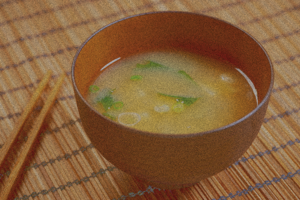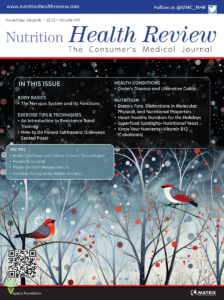 What is Miso?
What is Miso?
Miso is a nutritional force with a lot of flavor and is the versatile foundation for most Japanese-style dishes. A paste created from fermented soybeans, grains, salt, and kōji (a mold from East Asia used during the fermentation process), the ingredients of miso leave no mystery as to why it is often referred to as a paste.1 Miso is said to have a salty, savory, and tangy taste on its own, but its flavor depends on its fermentation period and chosen ingredients.
The three colors and flavors typical of miso are related to the longevity of the fermentation processes: white miso (shiromiso), the mildest flavor, has a short two-month fermentation period; red miso (akamiso), has a saltier taste and a fermentation period of around six months; and mixed miso (awasemiso), a combination of other types of miso (typically white and red), has the strongest taste and darkest appearance, with a fermentation period up to three years.1
Why is miso good for us?
Probiotics. The fermenting process provides miso with probiotics (“good” bacteria), which are beneficial for the gut microbiome and improve nutrient absorption.2,3 Probiotics are living bacteria that protect the stomach and digestive track from an excess of harmful stimuli.2,3 They can also aide in digestion; maintain overall digestive and cardiovascular health; assist in oral, urinary, and vaginal health; and assist in managing skin conditions such as eczema, and allergies.2,3 Regular consumption of fermented foods and their probiotics can boost immune function, reducing the requirement of infection-fighting antibiotics by 33 percent.4
Amino acids. In addition to housing probiotics, the soybean used to make miso is considered a complete protein because it contains nine amino acids the body cannot produce.5 Proteins constitute the enzymes that power many chemical reactions in the body, such as hemoglobin, which delivers oxygen to the blood. Not only are amino acids a source of energy, but they are “the building blocks” of body tissue.5
Vitamin B. Miso provides vitamin B. There are eight types of B vitamins, which maintain different bodily functions, but collectively they provide the body with energy and ensure cells are working properly. B vitamins produce new blood cells and maintain the health of many other cells throughout the body.6
Calcium. Though not much is utilized, calcium, of which miso is a source, influences the muscle walls of the heart (vascular contraction and vasodilation), the transmission of nerves, cellular signaling, and hormone secretion.6 The rest of the calcium the body does not utilize is stored in bones and teeth.
Iron, magnesium, and selenium. Iron and magnesium, which are provided by miso, are vital to the delivery of oxygen to cells in the bloodstream and the regulation of many biochemical reactions in the body.7,8 Magnesium also moderates glucose in the blood, as well as blood pressure and muscle and nerve function.8 An iron or magnesium deficiency can lead to muscular problems, fatigue, high blood pressure, mental disorders, and osteoporosis.7,8 Miso also provides selenium, which is integral to the body by guarding it from oxidative stress and infections.9
Phosphorus and choline. The majority of the phosphorus we get from our diet is stored in the body, similar to calcium. Phospohorus, a mineral, is responsible for filtering out waste from the body as well as repairing cell and tissue damage.10 Phosphorus works with B and D vitamins, magnesium, zinc, and iodine, which all provide balance to each other; this comes in handy because an overabundance of phosphorus is linked to heart disease, joint pain, and fatigue.10 Choline is produced in the liver, but our bodies may still require more supplementation via our diet.11 Choline synthesizes phosphatidylcholine and sphingomyelin, the lipids (phospholipids) that cell membranes need for structural integrity. Choline also plays a role in the production of acetylcholine, the neurotransmitter for memory, muscle control, mood, and other functions of the nervous system.11
Warnings. Miso is safe to consume for most individuals; however, miso has a high salt content,1 and with vitamin K1, which acts like a blood thinner, and goitrogen,12 which can disturb normal thyroid function,12 miso might not be for everyone. This means that patients with certain medical conditions that require monitoring salt intake, are on blood-thinning medications, or have poor thyroid function should avoid or discuss the consumption of miso with their healthcare provider.
How Should Miso Be Prepared?
There are many ways to incorporate miso into your meals. Akamiso and awasemiso can be added to soups, stir-fries, a glaze for vegetables, and as a condiment for side dishes. Shiromiso makes a delicious salad dressing and condiment as well. A simple miso soup is easy and quick to prepare. Access recipe here.
Sources
1. Research and Market site. Research. Global miso market 2018-2022. March 2018. https://www.researchandmarkets.com/research/mgp9m3/global_miso?w=4.
Accessed 11 April 2020.
2. Lewin J, RN. The health benefits of miso. BBC Good Food site. Updated 1 October 2018. https://www.bbcgoodfood.com/howto/guide/health-benefits-miso. Accessed 11 April 2010.
3. Harvard Health Publishing site. Healthbeat. How to get more probiotics. https://www.health.harvard.edu/staying-healthy/how-to-get-more-probiotics.
Accessed 11 April 2020.
4. Hao Q, Lu Z, Dong BR, Huang CQ, and Wu T. Probiotics for preventing acute upper respiratory tract infections. Cochrane Database Syst Rev.
2011;7(9):CD006895.
5. Harvard T.H. Chan School of Public Health site. The nutrition source. Protein. https://www.hsph.harvard.edu/nutritionsource/what-should-you-eat/protein/.
Accessed 11 April 2020.
6. United States National Institutes of Health site. Health information. Calcium. Updated 26 March 2020. https://ods.od.nih.gov/factsheets/Calcium-HealthProfessional/. Accessed 11 April 2020.
7. United States National Institutes of Health site. Health information. Iron. Updated 10 December 2019. https://ods.od.nih.gov/factsheets/Iron-Consumer/. Accessed 11 April 2010.
8. United States National Institutes of Health site. Health information. Magnesium. Updated 24 March 2020. https://ods.od.nih.gov/factsheets/Magnesium-HealthProfessional/. Accessed 11 April 2020.
9. United States National Institutes of Health site. Health information. Selenium. Updated 10 December 2019. https://ods.od.nih.gov/factsheets/Selenium-Consumer/. Accessed 11 April 2020.
10. United States National Institutes of Health site. Health information. Phosphorus. Updated 2 March 2020. https://ods.od.nih.gov/factsheets/Phosphorus-HealthProfessional/. Accessed 11 April 2020.
11. United States National Institutes of Health site. Health information. Choline. Updated 24 February 2020. https://ods.od.nih.gov/factsheets/Choline-HealthProfessional/. Accessed 11 April 2020.
12. Chandra AK. Goitrogen in food: Cyanogenic and flavonoids containing plant foods in the development of goiter. Bioactive Foods in Promoting Health. 2010; 691-716.





